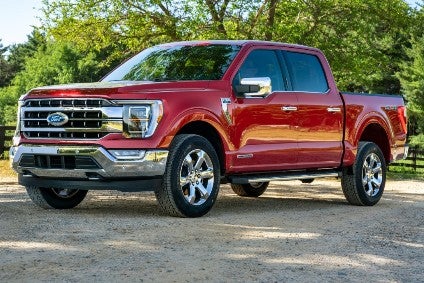
The year over year deficit in US light vehicle sales widened in the second quarter of 2020 as the COVID-19 pandemic ruled all three months.
Jaguar Land Rover and Mercedes have not yet released their Q2 figures but preliminary totals indicate Q2 deliveries came to about 2.9m, a 33.8% tumble from the same period in 2019.
The average daily sales rate (DSR) fell 18.9% from Q1 to Q2 as quarantines and other restrictions slashed showroom traffic in the US.
The US and European automakers have generally switched to quarterly reporting which hampers examination of trends.
But enough of the major players still reported monthly results to say, if there aren’t any more spanners in the works, the situation should improve from catastrophic to merely fairly bad.
Mazda and Volvo actually posted improved sales in June while most of the other took more gradual steps back from the abyss.

US Tariffs are shifting - will you react or anticipate?
Don’t let policy changes catch you off guard. Stay proactive with real-time data and expert analysis.
By GlobalDataMitsubishi and Nissan took it on the chin in the second quarter.
Mitsubishi’s deficit was 58%, the largest decline of any brand; Nissan’s shortfall was 49.5%, the most of any of the major marques.
FCA fared the worst of the Detroit automakers, down 38.6% for the quarter and 25.8% in the first half.
Ford and General Motors did slightly better than the industry as a whole, down 32.9% and 34.0%, respectively. Of the three companies, FCA is the most dependent on volume from daily rental fleets and the sharp downturn in travel and rentals has seriously depressed that industry’s purchasing.
For the Detroit Three, the story of the second quarter was pickups.
This was especially true at Ford, which has been heavily dependent on its F-series pickup. Between the F-Series and the Ranger, which is second only to the Toyota Tacoma in the mid-size segment, pickups accounted for 47.6% of Ford’s total turnover in Q2. Compare that to the 39.5% share in Q2 2019.
With the axing of the Continental, Lincoln is now a truck only brand.
When all is said and done, Ford will be left with the Mustang as its only mass market passenger car.
Ford also dropped the slow selling Flex and is said to be discontinuing the Edge crossover when this model reaches the end of its product cycle.
It will move production of the Lincoln Nautilus, which is also produced at Ford’s last Canadian assembly plant in Oakville, Ontario, to China.
This would mean the end of more than a century of Ford vehicle production in Canada.
General Motors actually achieved a larger share increase with its pickups.
The Canyon, Colorado, Sierra, and Silverado combined to claim 40.6% of The General’s total deliveries.
In the second quarter of 2019, the share was 32.5%.
With the addition of the Jeep Gladiator, pickups accounted for 37.3% of FCA’s sales volume, up from 31.2% in Q2 2019.
The bulk of that increase was due to a 174% increase in Gladiator turnover last quarter.
Unlike Ford, both GM and FCA get the bulk of their sales from crossovers and SUVs.
Nissan announced it was ending production of its full size NV commercial van.
The boxy NV was a good, traditionally styled van, but it couldn’t compete with the Chevrolet Express and the more European Ford Transit and Ram Promaster.
In spite of the challenges facing automakers, prices rose again in the second quarter, up about 3% from last year and up slightly from the first quarter of 2020.
Interest rates rose slightly, as well.
This brings up another challenge, as if one was required, to sales for the rest of the year.
Because of a high rate of unemployment, both temporary and permanent, lenders are becoming concerned about delinquencies and are tightening their lending standards.
Congress, as usual, has been ineffective at coming to grips with the economy as it exists now and the chances are good that some citizens will either be defaulting on payments or filing bankruptcy.
Of course, there is the ongoing issue of the pandemic.
Attempts to loosen restrictions have led to new outbreaks and the reimposition of the restrictions in many places.
There is also the possibility that a new mutation of the novel coronavirus is even more infectious than the original.
Automakers are countering the effects of the restrictions by offering online transaction systems that allow a buyer to select, purchase, and take delivery of a new vehicle with very little need of face to face interaction.
This flies in the face of traditional American vehicle purchasing transactions but it is a trend that has been developing for a while and may become a staple of the car buying experience in the United States, especially with younger consumers.
While it may be simply that the focus has shifted to survival, it is worth noting that there seems to be a shift away from the passion for autonomous driving.
There has been a definite shift from near term predictions to longer range goals that is hard to pin down but it would seem that several widely reported failures, including some involving Tesla vehicles, may have tilted public opinion to the more unfavourable side.
At this point in time, there are just too many variables to forecast the second half of 2020 in the US light vehicle market.
About the only thing one can say with a fair degree of confidence is that there will be one.
We are living in interesting times.



